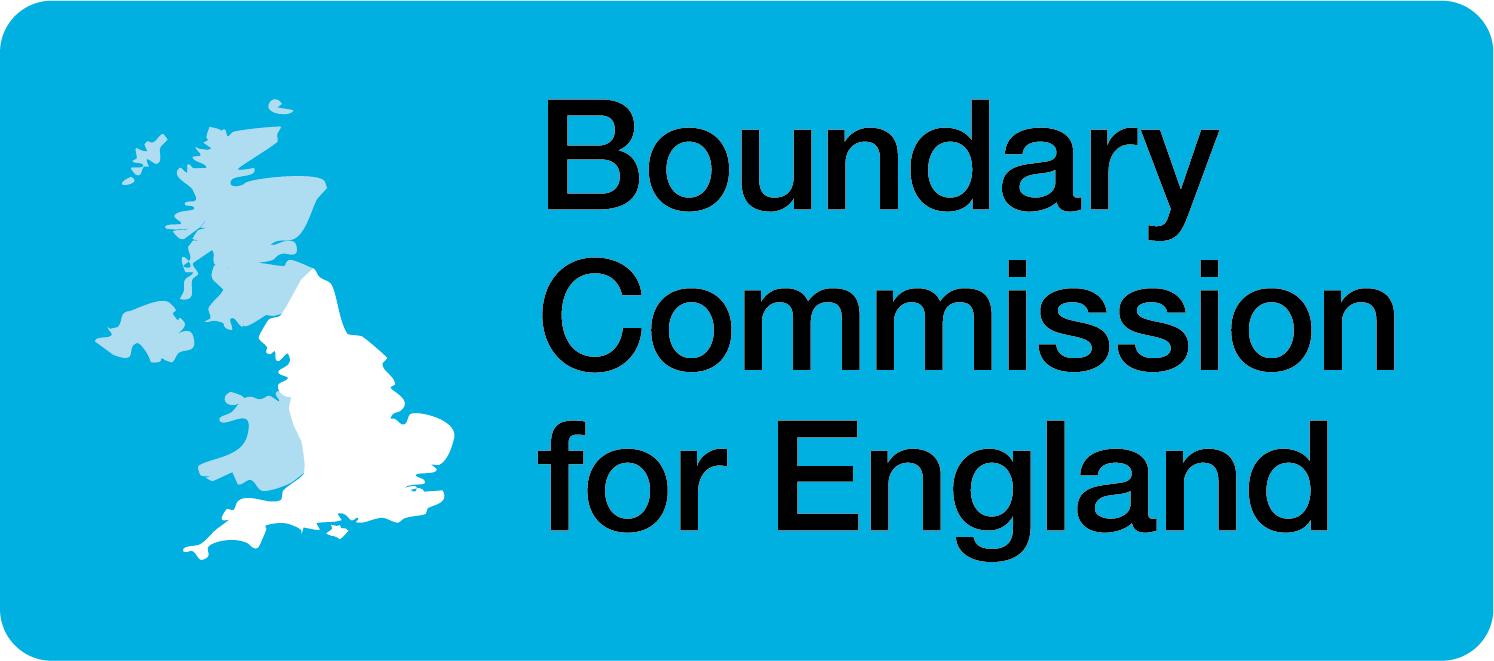Summary
Who we are and what we do – ‘The 2023 Review’1
1 Further details about the BCE and 2023 Review are published on our website: https://boundarycommissionforengland.independent.gov.uk/
The Boundary Commission for England (BCE) is an independent and impartial non‑departmental public body, which is responsible for periodically reviewing
Parliamentary constituency boundaries in England.
We are currently conducting a review on the basis of legal rules most recently updated by Parliament in 2020, which will conclude with a final report and recommendations from us by 1 July 2023. The rules require there to still be 650 constituencies across the UK, but more equally distributed across the four parts of the UK, which will see the number of constituencies in England increase to 543. Each (apart from five ‘protected’ constituencies) must also contain a number of electors that is no smaller than 69,724 and no larger than 77,062 (as at the fixed date of 2 March 2020).
We published our initial proposals for the new Parliamentary constituency boundaries in England on 8 June 2021 and there have been two rounds of statutory consultation relating to those to which we received over 45,000 responses. We have considered all of the comments received and taken them into account in developing our revised proposals, which we are now publishing for final consultation. For each region, a full report sets out a summary of the responses received to previous consultation on our initial proposals, our analysis of those, and the conclusions we have reached as to how the proposals should be revised as a result. The Appendix to each report contains details of the composition of each constituency we are now proposing, and maps to illustrate these can be viewed on our website or in hard copy at a local place of deposit.2
Back to topWhat are the revised proposals for the North East region?
We have revised the composition of 17 of the 27 constituencies we proposed in June 2021, and maintained our initial proposals for the remainder. We have revised the name of 12 of our initially proposed constituencies. Our revised proposals would leave two existing constituencies in the North East region wholly unchanged, and two unchanged except to realign constituency boundaries with local government ward boundaries.3
As it is not always possible to allocate whole numbers of constituencies to individual unitary authorities, we sometimes group these into sub-regions, meaning some constituencies cross unitary authority boundaries. After consideration of the responses to the sub-regions in our initial proposals, our revised proposals are based on partially amended sub-regions, as follows: ‘North of Tyne’4 (allocated eight constituencies); ‘North East’5 (allocated 12 constituencies); and ‘Tees Valley’6 (allocated seven constituencies).
Two constituencies would cross the boundary of Northumberland with Tyne and Wear (Hexham, and Cramlington and Killingworth), with another crossing the boundary of County Durham with Tyne and Wear (Blaydon and Consett).
In the North of Tyne sub-region, we have revised the composition of five of the constituencies in our initial proposals. The majority of change is around Newcastle and North Tyneside, where three proposed ward splits (Castle, Kingston Park South & Newbiggin Hall, and Riverside) allow multiple local ties to be maintained across the whole area, including the coastal connection between Whitley Bay and Tynemouth (which received over 200 representations across the two previous consultation periods).
In the North East combined authority sub-region, we have revised the composition of ten constituencies from our initial proposals. The borough of Gateshead would no longer have two whole constituencies, instead forming part of four, enabling a significantly more cohesive pattern of constituencies across the City of Sunderland, which would now form part of three constituencies (instead of five in our initial proposals). Further south, a split of Trimdon and Thornley ward would allow local ties to be maintained around the City of Durham, including the regaining of the western wards on the periphery of Durham (Brandon, Deerness, and Esh and Witton Gilbert).
In the Tees Valley sub-region, there would be a relatively small amount of change from our initial proposals. We have revised the composition of two of our initially proposed constituencies, moving wards between Redcar, and Middlesbrough South and East Cleveland to better reflect coastal community ties. The wards of Longbeck, St. Germain’s, and Saltburn would be transferred to Redcar, with Ladgate, Marton East, and Park End & Beckfield being transferred to Middlesbrough South and East Cleveland. These two revised constituencies would then be unchanged from their existing shape except to realign constituency boundaries with local government ward boundaries.
Back to topHow to have your say
We are consulting on our revised proposals for a four-week period, from 8 November 2022 to 5 December 2022. We encourage everyone to use this final opportunity to contribute to the design of the new constituencies – the more views we hear, the more informed our decisions will be when we make our final recommendations and report to Parliament. Our consultation portal at www.bcereviews.org.uk has more information
about our revised proposals and how to give us your views. You can also follow us on Twitter @BCEReviews or at facebook.com/BCEReviews.
2 A list of places of deposit is published on our website (as above).
3 Where the Order to make such wards was made by 1 December 2020.
4 Newcastle upon Tyne, North Tyneside, and Northumberland.
5 County Durham, Gateshead, South Tyneside and Sunderland.
6 Darlington, Hartlepool, Middlesbrough, Redcar and Cleveland, and Stockton-on-Tees.
